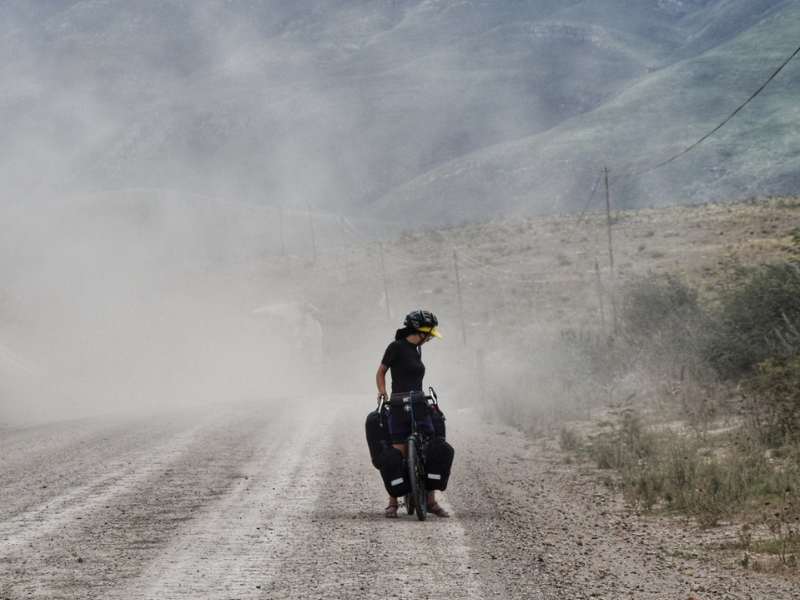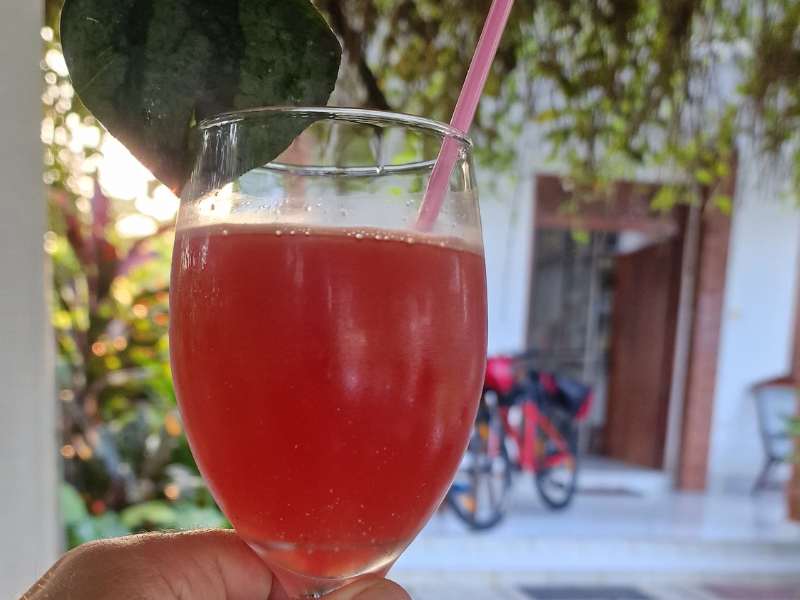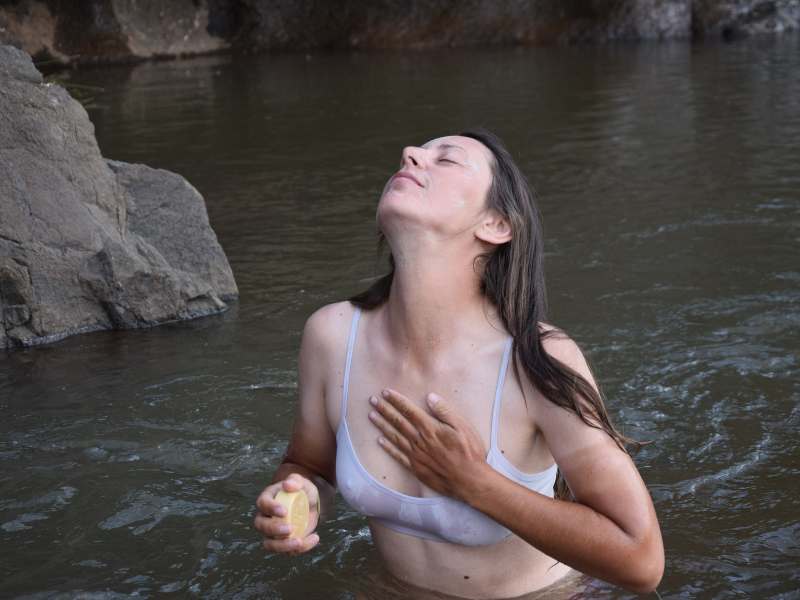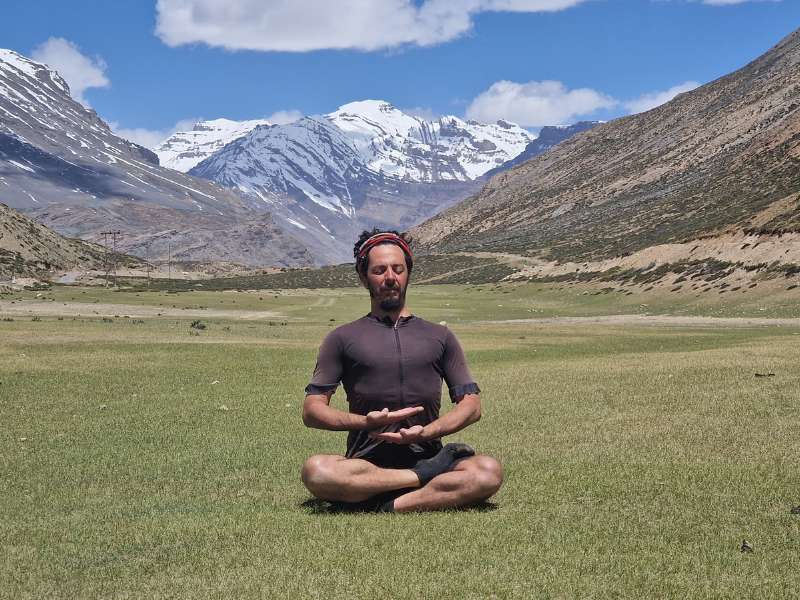Last Updated on 27 June 2024 by Cycloscope

Discover five effective ways to relax and rejuvenate after a long day of cycling. Find the perfect post-ride relaxation routine
Cycling offers a unique blend of freedom, adventure, and physical challenge, whether for leisure, sport, or travel. The wind against your face, the rhythmic pedal strokes, and the ever-changing scenery make every ride an experience. However, after hours on the saddle, the body and mind crave relaxation. How do you transition from the ride’s adrenaline to a calm state? Let’s discover together!
5 Ways To Unwind And Relax After A Long Day On The Saddle
1. Delta 9
Disclosure: Some of our articles contain affiliate links. This comes at no additional cost for you and helps us keep this website up and running. (as Amazon Associates we earn commission from qualifying purchases)

One of the most talked-about relaxation aids in recent times is hemp-derived delta 9. Extracted from hemp, this compound offers a sense of calm without the intense psychoactive effects associated with other cannabinoids. After a long ride, a small dose can help relax the muscles, alleviate post-ride discomfort, and promote a peaceful mind. It’s available in various forms, from tinctures to edibles, allowing cyclists to choose what best suits their relaxation routine.
2. Yoga

Stretching out after a ride is essential, and what better way to do it than with yoga? Specific yoga poses can help release tension in the muscles most used during cycling, such as the hamstrings, quads, and lower back. Poses like the Downward Dog, Pigeon Pose, and Child’s Pose can be particularly beneficial. Moreover, the meditative aspect of yoga helps calm the mind, making it a holistic post-ride relaxation practice.
3. Herbal Teas

After a strenuous ride, sipping on a warm herbal tea can be incredibly soothing. Chamomile, lavender, and valerian root teas are renowned for their relaxation properties. Not only do they help relax the muscles, but they also promote better sleep, ensuring you’re well-rested for the next day’s ride.
Here are some more herbal teas known to promote relaxation:
- Lemon Balm: This herb is believed to reduce anxiety, improve sleep, and calm the mind.
- Passionflower: Often used to treat anxiety and insomnia, passionflower can help ease the mind.
- Peppermint: While invigorating in aroma, peppermint tea can help soothe the muscles and reduce tension headaches.
- Holy Basil (Tulsi): Known for its adaptogenic properties, Tulsi helps in combating stress and promotes mental balance.
- Rose: Beyond its fragrant aroma, rose tea can uplift the spirit and calm the nervous system.
- Licorice Root: This tea can help balance adrenal function, which might be beneficial after physical exertion.
4. Warm Baths

Immersing yourself in a warm bath can work wonders for sore muscles. Add some Epsom salts, known for their muscle-relaxing properties, and a few drops of essential oils like lavender or eucalyptus for a spa-like experience. The warmth of the water improves circulation, aiding muscle recovery, while the tranquil ambiance helps you unwind.
5. Mindful Breathing

Often, the physical exertion of cycling can lead to shallow breathing. Taking a few minutes to practice mindful breathing can help oxygenate your body and calm your mind. Sit comfortably, close your eyes, and take deep, deliberate breaths. Focus on the sensation of the air entering and leaving your body. This simple practice can center on you, reducing post-ride stress and fatigue.
Balancing Activity with Recovery
Cycling, with its myriad of benefits, is undeniably a rewarding activity. However, like any physical endeavor, it demands a lot from the body and mind. Here’s why taking both mental and physical rest after cycling is not just beneficial but essential.
Physical Recovery: The Body’s Rebuilding Phase

Our muscles undergo microscopic tears every time we cycle, especially during prolonged or intense sessions. While this might sound alarming, it’s a natural process and is, in fact, the foundation of muscle strengthening.
When we rest, our body gets to work repairing these tiny tears, making the muscle fibers stronger than before. Without adequate rest, we deny our bodies this crucial recovery phase, increasing the risk of injuries and diminishing performance in future rides.
Besides, cycling utilizes the body’s energy reserves. Glycogen, stored in our muscles, is the primary fuel source during physical activity. Post-ride rest ensures these glycogen stores are replenished, readying the body for the next cycling adventure.
Mental Recuperation: Refreshing the Mind’s Palette
The mental aspect of cycling is often overshadowed by its evident physical demands. Yet, navigating through traffic, maintaining balance on challenging terrains, and pushing oneself to achieve personal milestones requires significant cognitive effort. If not addressed, mental fatigue can lead to reduced alertness, slower reaction times, and even a diminished passion for cycling.
Taking time to unwind mentally allows the brain to process the ride’s experiences, from the challenges to the sights witnessed. This mental downtime can enhance focus and motivation for subsequent rides.
The Synergy of Mental and Physical Rest
The interplay between mental and physical rest is a harmonious dance. When the body is well-rested, there’s a natural upliftment in mood and spirit. Conversely, a relaxed mind promotes better sleep quality, paramount for physical recovery.
Moreover, rest periods can be an opportunity for reflection and learning. It’s a time to assess one’s cycling performance, identify improvement areas, and set future goals. This introspection and the physical readiness post-recovery can lead to more fulfilling and efficient rides.
Listening to Your Body and Mind
It’s vital to remember that recovery needs can vary among individuals. Factors like age, fitness levels, and the ride’s intensity play a role in determining the amount of rest required. While some might feel rejuvenated after a day’s rest, others might need a few days to fully recover. The key is to listen to one’s body and mind, recognizing signs of fatigue, soreness, or mental exhaustion.
Bonus Tips for a Safe and Rewarding Cycling Experience
Cycling is more than just a mode of transportation or a sport; it’s a lifestyle offering many benefits. If you are still in doubt whether you should take it up, consider the following benefits this hobby brings to the table:
- Physical Health: Regular cycling can significantly improve cardiovascular health, increase muscle strength, enhance joint mobility, and aid in weight management. The consistent pedaling provides a low-impact workout, making it suitable for all ages.
- Mental Well-being: The rhythmic nature of cycling and the exposure to the outdoors can have therapeutic effects on the mind. It can reduce stress levels, alleviate symptoms of depression, and boost overall mood. The sense of accomplishment after completing a challenging ride can also enhance self-esteem.
- Environmental Impact: Choosing to cycle over driving reduces carbon emissions, making it an eco-friendly option. It’s a step towards a sustainable future since it reduces the carbon footprint and decreases congestion in urban areas.
- Economic Benefits: Cycling can lead to significant savings. Opting for a bike can be easy on the wallet, from fuel costs to parking fees and vehicle maintenance. Moreover, cities worldwide are investing in cycling infrastructure, making it an increasingly viable mode of transport.
Now, if you are ready to take up this wonderful activity, be prepared for the following challenges:
- Physical Demands: Long rides, especially on challenging terrains, can be physically taxing. Muscle soreness, fatigue, and, in some cases, injuries can occur. Listening to one’s body, taking adequate breaks, and ensuring proper nutrition and hydration are essential to avoid severe consequences.
- Weather Woes: Cyclists are at the mercy of the elements. Rain, strong winds, and extreme temperatures can make rides challenging and, at times, risky. Proper gear, from waterproof jackets to sunblock, is crucial.
- Navigational Challenges: Getting lost can be a concern, especially in unfamiliar areas. While technology has made navigation easier, it’s always good to understand the route and carry physical maps when venturing into remote areas.
Last but not least, ensuring safety while cycling is paramount. Here are some essential guidelines every cyclist should adhere to:
#1 Wear a Helmet
A no-brainer, yet often overlooked. A helmet can significantly reduce the risk of head injuries in case of a fall or collision.
#2 Stay Visible
Especially during dawn, dusk, or nighttime rides, ensure you’re visible to other road users. Wear reflective clothing, and equip your bike with front and rear lights.
#3 Follow Traffic Rules
Cyclists must follow traffic regulations like any other vehicle. Stop at red lights, use hand signals to indicate turns, and always ride in the direction of traffic.
#4 Stay Alert
Be aware of your surroundings. Watch out for opening car doors, pedestrians, and other obstacles. Avoid using headphones, as they can distract you from hearing crucial sounds like horns or sirens.
#5 Maintain Your Bike
Regularly check your bike for any issues. Ensure the brakes are working, the tires are inflated, and the chains are well-lubricated. A well-maintained bike provides a smoother ride and reduces the risk of accidents.
#6 Plan Your Route
If you’re cycling in a new area, plan your route. Familiarize yourself with potential challenges, whether busy intersections, steep climbs, or rough terrains.
#7 Stay Hydrated and Energized
Carry enough water and snacks, especially on long rides. Staying hydrated and ensuring your energy levels are up is crucial for performance and safety.
#8 Educate Yourself
Attend cycling workshops or join local cycling groups. Learning from experienced riders can provide valuable insights into safe cycling practices.
From Pedal Pusher to Peaceful Lounger
Every cycling journey, no matter how exhilarating, deserves a peaceful conclusion. By incorporating relaxation techniques, you ensure that your body and mind get the rest they need, prepping you for many more adventures on the saddle. So, the next time you dismount after a long ride, remember to transition from pedal pusher to peaceful lounger, embracing the relaxation you’ve earned.


